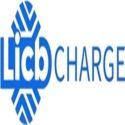Notifications

8 minutes, 10 seconds
-3 Views 0 Comments 0 Likes 0 Reviews

As the electric vehicle (EV) revolution accelerates, the demand for faster, more efficient charging infrastructure has never been more critical. Among the various charging options, Level 3 electric vehicle chargers—also known as DC Fast Chargers (DCFC)—stand out as the gold standard for rapid charging. These high-powered chargers are designed to dramatically reduce charging times, making them ideal for highway rest stops, commercial fleets, and urban mobility hubs.
Whether you're driving a Tesla, Nissan Leaf, or Porsche Taycan, Level 3 chargers provide a practical solution when you need to recharge in under an hour. With power outputs ranging from 50 kW to 500 kW, they can add 100 to 250 miles of range in just 30 to 45 minutes, depending on the vehicle’s battery capacity and state of charge.
This article explains how Level 3 EV chargers work, how they differ from Level 1 and 2 chargers, and why they’re essential to the future of electric mobility.
Unlike Level 1 and Level 2 chargers that rely on a vehicle’s onboard charger to convert Alternating Current (AC) to Direct Current (DC), Level 3 chargers perform this conversion internally. This allows them to deliver DC power directly to the battery, bypassing onboard limitations and significantly speeding up the charging process.
Due to their high power requirements and advanced hardware, Level 3 chargers are typically installed in commercial, industrial, or public infrastructure settings. These systems operate at voltages between 400V and 800V, with some advanced units reaching up to 1000V DC to support modern EVs with high-voltage battery architectures.
Power Output: 50 kW to 500 kW
Voltage Range: Typically 400V–800V; up to 1000V for newer EVs
Charging Time: Adds up to 20 miles of range per minute
Use Cases: Long-distance travel, fleet operations, urban charging hubs
Tesla's Supercharger network is perhaps the most recognized Level 3 charging system, delivering up to 250 kW of power. Other prominent networks include EVgo, Electrify America, ChargePoint, and EVESCO, offering widespread fast-charging coverage across North America and beyond.
EVESCO’s EVDC series exemplifies next-generation DC fast charging. These units:
Offer 60 kW to 360 kW outputs
Support both 400V and 800V architectures
Feature dual charging ports with intelligent load balancing
Comply with OCPP 1.6 and ISO 15118 standards
Include modular designs for scalable deployment
When one vehicle is plugged in, it receives full power. If a second connects, the system intelligently splits the load.
EV batteries require DC power to charge, but the electrical grid supplies AC power. Level 1 and 2 chargers rely on the car’s internal charger for this AC-to-DC conversion, which limits charging speed to 1.4 kW (Level 1) or up to 19.2 kW (Level 2).
In contrast, Level 3 chargers convert AC to DC externally and feed DC power directly to the battery, allowing for much faster and more efficient charging.
Charging speed on Level 3 chargers isn’t linear. It varies based on the State of Charge (SOC):
From 0% to 80%, EVs can accept higher power levels
Beyond 80%, charging slows significantly to prevent battery overheating and degradation
For example:
10% to 80% may take 30 minutes
80% to 100% could take another 30 minutes
This is managed by the EV’s Battery Management System (BMS), which monitors real-time temperature, voltage, and current.
Here’s a breakdown of charging speeds based on power output:
| Power Output (kW) | Approx. Range Added (Miles/Minute) |
|---|---|
| 50 kW | 3–4 miles/minute |
| 150 kW | 9–12 miles/minute |
| 350 kW | Up to 20 miles/minute |
Actual performance depends on vehicle efficiency, battery size, and ambient temperature.
Level 3 EV chargers are available with several connector types:
CCS (Combined Charging System) – Widely used in Europe and North America
CHAdeMO – Common in Japanese EVs like the Nissan Leaf
Tesla Supercharger – Proprietary but increasingly includes CCS support in some markets
Many modern chargers offer multi-standard connectors or adapter support, enhancing compatibility across different EV models.
A common concern is whether Level 3 charging degrades battery health. While high-speed charging does generate more heat, modern EVs are equipped with advanced thermal management systems to regulate battery temperature.
Occasional Level 3 charging is safe and convenient
Frequent daily use may contribute to faster long-term battery degradation
Best Practice: Use Level 1 or 2 charging for daily needs, and reserve Level 3 charging for long trips or when time is limited.
Level 3 chargers play a crucial role in several real-world use cases:
Highway Corridors: Rapid refueling for long-distance EV travel
Fleet Operations: Keeps electric taxis, delivery vans, and buses on schedule
Urban Hubs: Supports high-demand environments like rideshare and public charging stations
Commercial Properties: Attract EV-driving customers to shopping centers, hotels, and restaurants
EVESCO’s EVDC chargers, with modular scalability and smart energy distribution, are ideal for these environments.
As EV adoption continues to grow, so does the demand for ultra-fast charging:
Automakers are rolling out 800V-capable EVs
Charging networks are expanding with government support (e.g., U.S. Infrastructure Investment and Jobs Act)
New innovations like battery swapping, V2G (Vehicle-to-Grid), and AI-based charging optimization are emerging
These advancements promise even faster, smarter, and more sustainable EV charging.
Level 3 electric vehicle chargers are revolutionizing how we power our transportation. By enabling charging in minutes instead of hours, they’re bridging the convenience gap between EVs and traditional fuel vehicles.
With ongoing innovations in battery tech, charging standards, and infrastructure, Level 3 chargers are becoming faster, more accessible, and more critical to the future of clean mobility.
Whether you're an EV driver, fleet manager, or infrastructure developer, understanding and investing in Level 3 charging is key to staying ahead in the electrified future.Know more about Google SEO Directory
China EV Chargers EV Charger Manufacturer EV Charging Solutions
